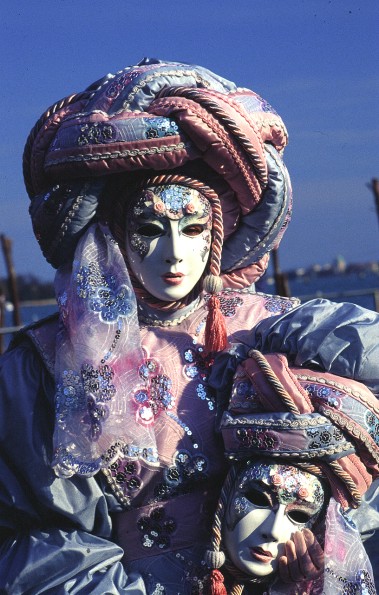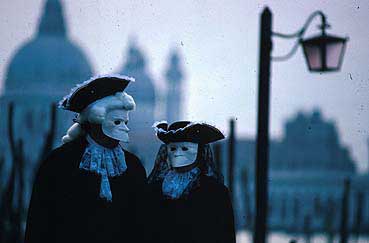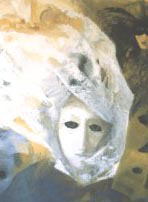|
Carnival in Venice
When Carnival first began it was celebrated from December 26 and reached its climax the day before Ash Wednesday, also known as "Mardi Gras". During the period of Carnival it seems that every excess was permitted and the fact that everyone wore masks seemed to abolish all social division. All the campi were thronged with people intent on partying and carousing, singing, dancing and playing games. The most common costume (the bałtta) was composed of a black silk hood, a lace cape, a voluminous cloak (the tabarro), and a three-cornered hat and a white mask that completely covered the wearer's face. This allowed revelers to go around the city incognito. It was useful to go to casini, places where you could play games of chance.
Since 1980 the celebration of Carnival in Venice has gained popularity. People come from the world over to attend private and public masked balls and masked revelers of all ages invade the campi where music and dancing continues nearly day and night. Theatrical performances and an array of ancient games are organized for the amusement of Venetians and visitors alike.
Carnival, or Carnevale, is Venice's answer to Mardi Gras and Fasching. For a 10-day period before Lent each winter, tourists flood the city for an orgy of pageants, commedia dell'arte,concerts, balls, and masked self-display until Shrove Tuesday signals an end to the party. Carnevale isn't just a Venetian tradition; similar festivities occur throughout much of the Roman Catholic world, including other cities in Italy. The term "Carnevale" comes from the Latin for "farewell to meat" and suggests a good-bye party for the steaks and stews that Catholics traditionally gave up during the weeks of fasting before Easter. The masquerade aspect of Carnival is even older: the Romans celebrated winter with a fertility festival where masks were worn by citizens and slaves alike.


|







 View opera DON GIOVANNI
View opera DON GIOVANNI
